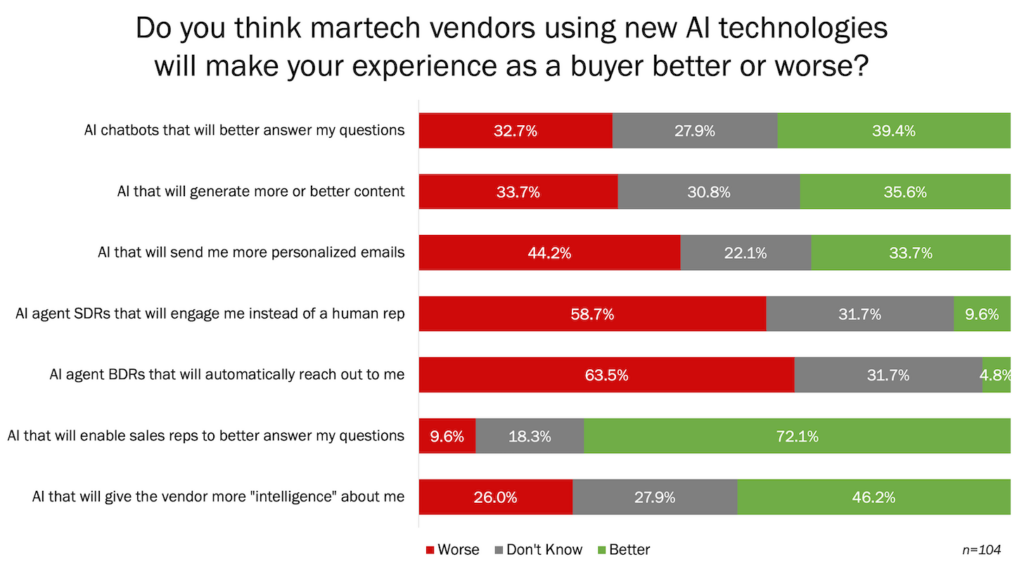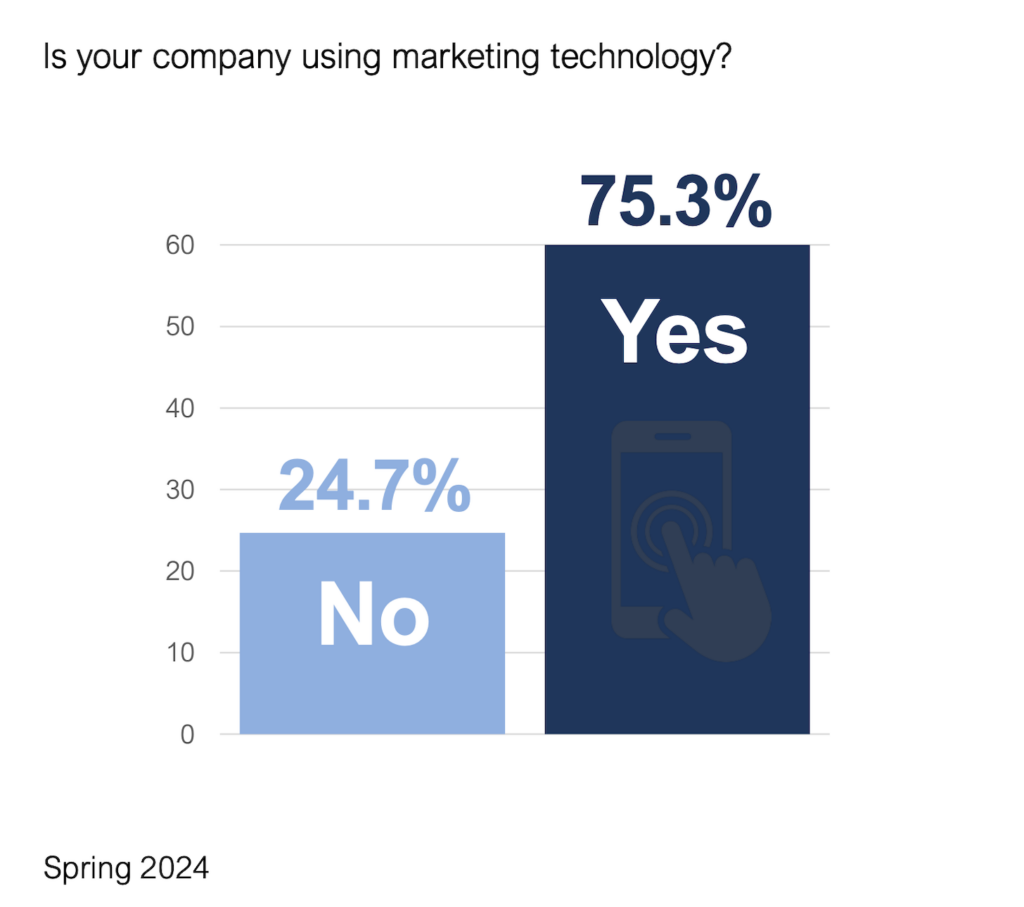Not every marketer needs to be a technologist. But given how deeply technology is now entwined in modern marketing, every marketer should be familiar with the essential laws of technology that effect your strategies and operations.
Here are seven laws of technology that every marketer should know — along with a few nuggets of techno-culture that make for great beer conversation with the IT department:
1. Moore’s Law
The most famous technology law of all time: the performance of hardware doubles about every 2 years. Named after Intel co-founder Gordon Moore who first predicted this trend in the 1960’s. That such exponential growth in computing power has continued unabated for nearly 50 years is pretty miraculous. Witness the Osborne computer from 30 years ago next to a circa-2009 iPhone — the iPhone is 100 times faster and almost 500 times smaller. (Photo by Casey Fleser.)
Moore’s prediction was originally about the number of transistors on a microchip. However, the trend of exponential improvements to hardware has appeared elsewhere: growth in hard disk capacity, growth in network capacity, growth in biotechnology, growth in pixels (relative to cost) of digital cameras and LCD screens, etc. Futurist Ray Kurzweil has actually generalized this as The Law of Accelerating Returns.
Why should you care? This law drives what’s possible with your products and your marketing — the key lesson is that the frontier of what’s possible keeps moving fast. Peter Diamandis, head of the X Prize Foundation, recently said in a VentureBeat interview, “If you’re a CEO of a company and you’re not aware of where these technologies are going, they can literally put you out of business in a snap of a finger. Or you can use them to leapfrog your competition.”
2. Wirth’s Law
The ironic corollary to Moore’s Law, Wirth’s Law states: software gets slower more rapidly than hardware becomes faster. Computer scientist Niklaus Wirth made this observation in 1995, in a plea for lean software. It’s also known as Gates’ Law (after Bill Gates of Microsoft) and Page’s Law (after Larry Page of Google), who have both “discovered” this dynamic in their own businesses.
This is why the latest version of Microsoft Office running on a new computer seems to run about the same speed as an older version of Office running on an older machine. The blame for this seeming negation of Moore’s Law is often placed on software bloat resulting from unending feature creep, lazy code cruft, or poor engineering management. But more broadly, it’s simply a variation of Parkinson’s Law: work expands so as to fill the time available for its completion.
Why should you care? Note well: expectations from technology keep rising! Rather than cut costs as a given level of hardware performance becomes cheaper over time, many businesses take the additional performance at the same cost and apply it to even greater capabilities — or find a different technology in which to leverage that investment. Cloud computing has greatly reduced the friction of this constant “trading up” phenomenon. In economics this is known as the Jevons Paradox.
Still, keep in mind this adage of product/project management: feature requests are always infinite, while resources are always finite. Choose wisely.
3. Brooks’ Law
A technology law that has been the bane of managers for decades, Brooks’ Law says: adding manpower to a late software project makes it later. It is humorously summed up in the remark, “Nine women can’t make a baby in one month.”
Fred Brooks, who coined this law in his classic book on software engineering and management, The Mythical Man-Month, claims that there are two reasons why this is generally true:
- It takes some time for new people added to a project to become productive (“ramp up time“), which sucks time away from the existing team members to educate them.
- Communication overhead increases as the number of people increases.
Experiences such as Brooks’ eventually inspired a new approach to building software, agile development methodologies, which generally move away from big, fixed specifications to more flexible, “iterative” implementations, with smaller teams and shorter, fixed time windows. Agile teams are typically only 5-9 people, to simplify team communication and collaboration.
Why should you care? Marketing is increasingly hip-deep — sometimes neck-deep — in development of its own software, especially web and mobile apps, as well as the technical configuration and customization of off-the-shelf platforms, such as marketing automation. In other words, marketing now involves engineering management, so it’s worth knowing its hard-learned dynamics rather than having to painfully “rediscover” them.
Bonus tip. For hiring (or contracting) technical talent, keep in mind one of Brooks’ other enduring insights: “good” programmers are generally 5 to 10 times as productive as mediocre ones.
4. Hofstadter’s Law
Related to Brooks’ Law is the lovely paradox of Hofstadter’s Law: it always takes longer than you expect, even when you take into account Hofstadter’s Law. It’s a recursive statement on the difficulty of accurately estimating the time to complete tasks of any substantial complexity.
Cognitive scientist Douglas Hofstadter stated this law in his Pulitzer Prize-winning book, Gödel, Escher, Bach — affectionately known as “GEB.” The self-referential loop in the law’s definition is one of the recurring themes of GEB. Such appreciation for recursion, and humorous witticisms based on recursion, is one of the foundations of tech culture — such as recursive acronyms.
Why should you care? Although Hofstadter’s Law is clearly tongue-in-cheek, there’s an important lesson here: it’s hard to predict complex outcomes accurately — and the state of marketing technology is complex enough to qualify. The solution is to expect the unexpected, and adopt management approaches that work well under such uncertainty. Great examples include agile marketing, based on the principles of agile software development, and test-driven marketing, which embraces continuous experimentation.
5. Segal’s Law
Short but sweet, Segal’s Law is relevant for anyone involved in marketing measurement (i.e., everyone in marketing): a man with a watch knows what time it is; a man with two watches is never sure.
If you’ve ever spent time trying to get two different web analytics packages to report the same numbers, you already have a deep appreciation for this law. Because there is so much overlap of data from different systems in the marketing domain, it can be an unending quagmire to try to get all the numbers to line up perfectly.
Why should you care? Marketing is awash in measurement and metrics — which, for the most part, is a good thing. But it’s important to focus on meaningful signals and trends revealed by these numbers, rather than becoming obsessed with margin-of-error accuracy. Tom Davenport, arguably the world’s leading advocate for business analytics, has said: “Analytics shouldn’t be about the math. It should be used to tell stories, frame decisions, and find the courage to stand firm on consenting opinions from the status quo.”
Put another way: it doesn’t matter so much “what time it is,” as much as it matters “what are we going to productively do with the next hour.”
6. Conway’s Law
Conway’s Law is my favorite: any piece of software reflects the organizational structure that produced it. Melvin Conway made this sociological observation in 1968, later affirmed by a Harvard Business School study, and it wasn’t intended as humor (although it does unintentionally satirize design by committee).
I actually subscribe to a broader interpretation of this law: that software — and other complex systems, such as web sites and marketing operations processes — reflect both the structure and culture of the organizations that create them.
This is why there is so much opportunity for differentiation for innovative products and services, even in crowded markets. For example, personal finance was a pretty mature category when Mint.com launched in 2007. Yet their fresh ideas, intuitive UX design, and simple workflow won them millions of users. The behemoth Intuit tried but couldn’t match their approach — and ended up acquiring them instead.
Why should you care? You shouldn’t be too worried about competitors reverse engineering what you do. You should, however, be very concerned about the structure and culture of your team — is your marketing department designed to inspire and enable the kinds of innovative products, marketing campaigns, and customer experiences that will amaze and delight your market? Not to sound like a broken record, but this is another good reason for adopting more agile management practices.
This is one of the key reasons that I advocate for marketing technologists based in the marketing department, rather than across the aisle in IT. Splitting creative and technological collaboration across two departments will inevitably be reflected in what gets produced.
7. Metcalfe’s Law
Saving the best for last, Metcalfe’s Law states: the value of a network is proportional to the square of the number of connected users. Robert Metcalfe, the inventor of Ethernet, first formulated this law to characterize the benefits of having compatible communications devices — e.g., computer networks, fax machines, etc. — adopted by a growing number of people.
This exponential increase in value emerges because of the number of pair connections within a group of N people is equal to (N)(N-1)/2 — which is approximately N2. Or, put more simply, a network’s value grows exponentially. At least up to any human limit to take advantage of these interconnections.
With the rise of social media, this law has been frequently cited in social networking dynamics, one of the forces behind so-called dominant exchanges. You’re on Twitter and Facebook because everyone else is on Twitter and Facebook. A variation known as Reed’s Law speaks specifically to the utility obtained from scaling social networks.
Why should you care? Since social networks are infused into modern marketing, it’s good to have this model in mind — the incentives for growing your own sub-communities within Facebook, Google+, LinkedIn, and Twitter, as well as your own proprietary customer networks. Find ways for participants to benefit from relationships with each other — not just with you — to tap into those powerful exponential dynamics.








Nice article….
there’s an 8th one: GDPR, which says “any international organisation trying to do marketing in Europe is going to have to comply with European data privacy law … or pay up to 4% of global revenues …”